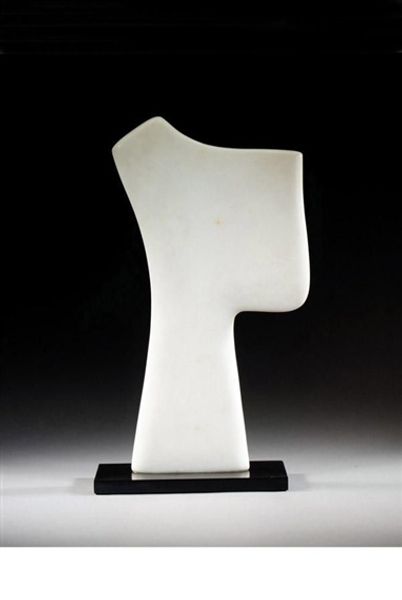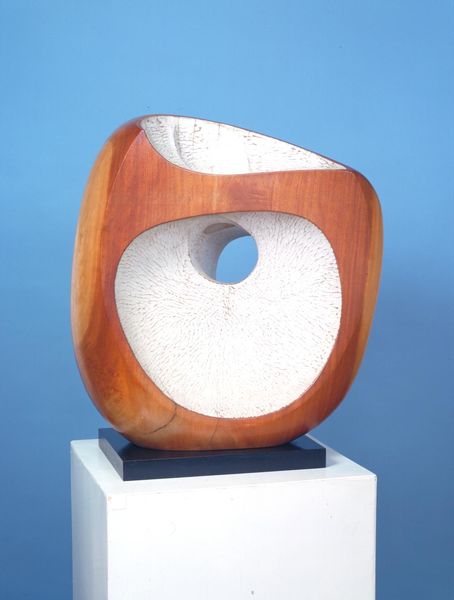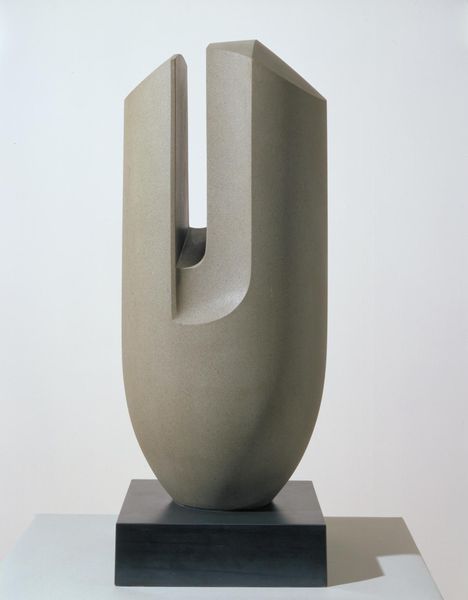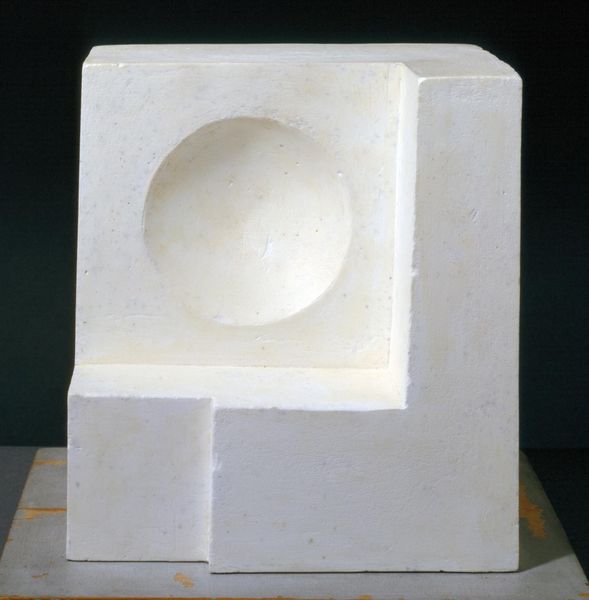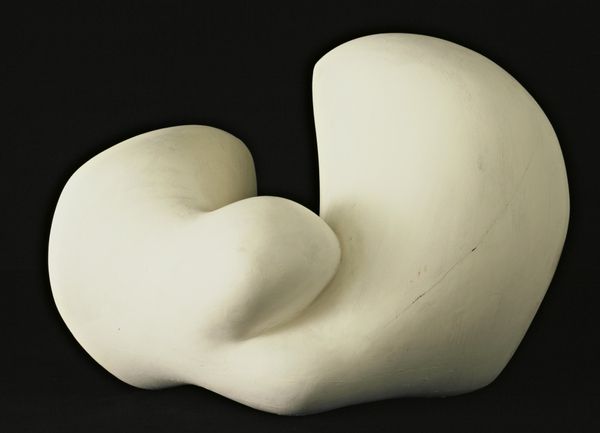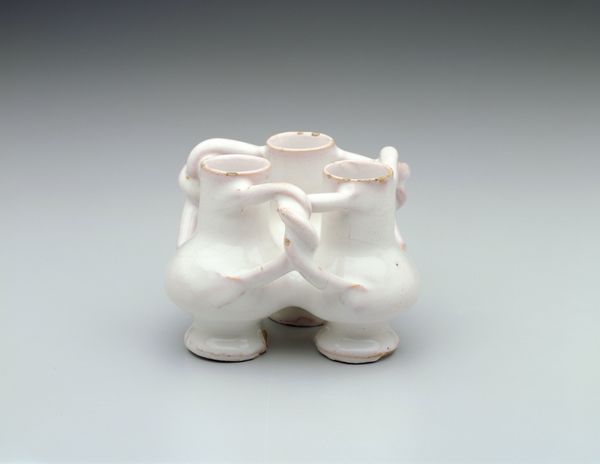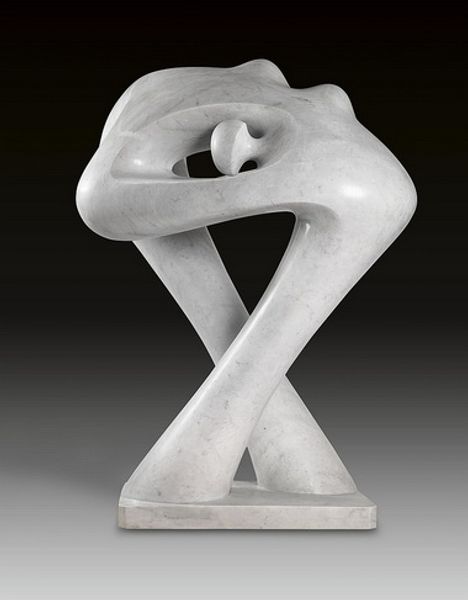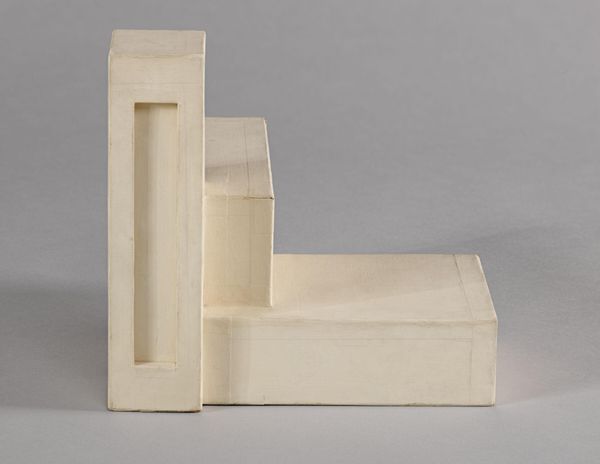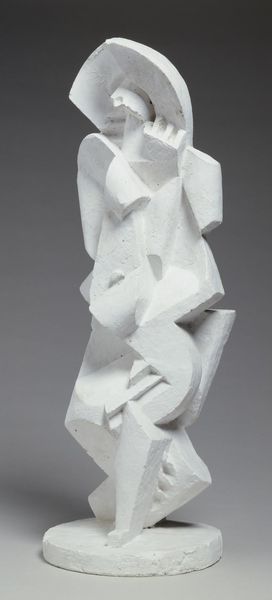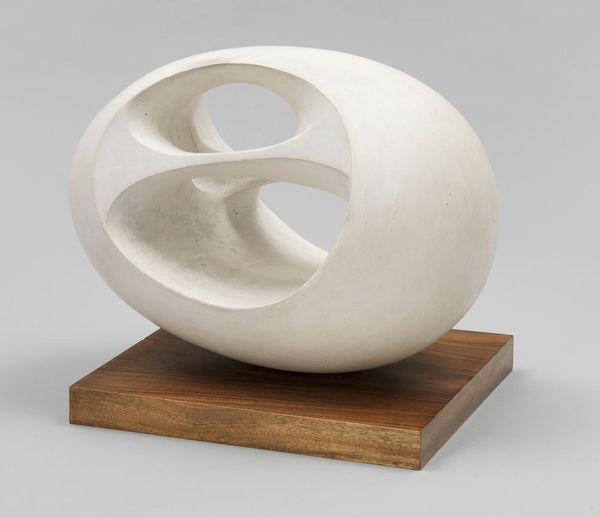
Copyright: Agustin Cardenas,Fair Use
Editor: Here we have Agustin Cardenas's "Flowered Window," a marble sculpture created in 1977. The smooth, white stone has such a cool, almost clinical feel. What do you see in this piece, and how would you interpret its stark forms? Curator: Immediately, I see a dance between geometry and organic form. The title "Flowered Window" suggests a connection to the natural world, but the abstraction pushes us beyond a literal representation. Do you notice the smooth, almost suggestive shapes juxtaposed with the sharp, geometric lines? Editor: I do! It's like two different languages being spoken at once. Curator: Exactly. Think about windows – they frame our view of the world, and flowers often symbolize beauty and growth. Cardenas may be inviting us to consider how we perceive beauty within constructed forms. Do these smooth, protruding sections remind you of anything familiar? Editor: I can see a hint of organic forms like buds or breasts... which could suggest a life-affirming sense. Curator: Precisely. It invites consideration of female power and a visual interpretation of creative growth within confining forms. There’s a push and pull, a tension there. The cultural memory of marble as a symbol of permanence and status clashes with these more playful, yielding shapes. Editor: I never considered how marble's history affects how we see the sculpture now. So, Cardenas is almost challenging our expectations? Curator: In a subtle way, yes. He plays with our established understanding of symbols, suggesting that beauty and vitality can be found even in the most rigid of structures. Editor: I'm starting to look beyond just the shape of the sculpture. It's really a complex and layered piece! Thanks! Curator: Indeed! These pieces often contain cultural context that help further shape your interpretation.
Comments
No comments
Be the first to comment and join the conversation on the ultimate creative platform.
